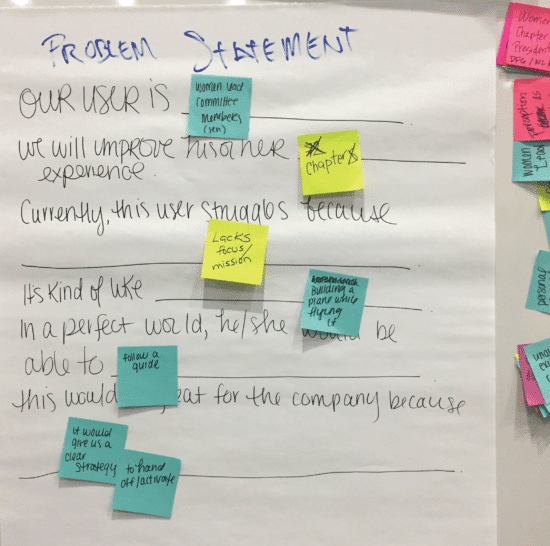Brand Insights
For Health Science Executives
Pragmatic Marketing Delivers Real Results
Pragmatic Marketing Delivers Real Results

Is “pragmatic marketing” a new craze, or just good common sense?
“Pragmatic marketing” is a term we’ve been hearing a lot lately. People seem to think it’s a new concept, or even a “strategy shift.” The basic idea is to focus your efforts on marketing decisions and actions that are useful in practice, not just in theory.
As logical as that may sound, it hasn’t always been the norm in the health sciences.
Whether the idea is old or new, a pragmatic approach is still a good strategy. And while that’s especially true if you’re a startup with a limited budget, it also works for long-established companies.
What pragmatic marketing really means
In business terms, pragmatic marketing implies a simple approach that gets measurable results. There’s no room for overspending, speculation, “hunches”, or fluff. Because they have limited time and resources, emerging health science companies need a pragmatic approach — and in fact, they always have.
Practical strategies are driven by clear goals and actions that get results. Here are six steps to help your organization get more pragmatic:
1. Align sales and marketing
Your sales and marketing people bring different perspectives to the table. Take advantage of this diversity by encouraging them to operate as a team.
Start with everybody in the same room and establish goals both teams can buy into. Even one strategic conversation can give you more momentum. But don’t stop there — make sure your processes and culture encourage them to build relationships and plans, and stay in regular contact.
We’ve seen this strategy work over and over. It’s simply about both teams working together to meet the buyer where they are in their journey. Recently, one of our clients was close to losing a major sales opportunity. The sales team consulted the marketing team and discovered that a key piece of new content — highly relevant to the potential buyer — was in development. The marketing team responded so the piece could be sent to the buyer before the next presentation. This simple collaboration moved a prospect from no to go.
2. Define your business goal
Pragmatic marketing goals have three characteristics:
- They can be measured in a quantifiable way,
- A single objective, and
- A realistic and achievable return on investment (ROI).
The most important thing is to clearly define the specific target you’re aiming for. This is a key decision, because your goal will become the “measuring stick” for evaluating your efforts going forward.
3. Go find your buyers
Marketing is a two-way relationship. However much you may love certain features and benefits of your offering, you are NOT your buyers or users. Your marketing needs to focus on what matters to your buyers. You’ll also need to identify which channels they’re most receptive to.
Look for your target market in the places they’re most active. If you’re not sure where that is — or even if you think you know — try testing the same message in multiple channels to see what gets the most response. Don’t ignore “old fashioned” media like print. Many older audiences still prefer it. Even many younger people think it has more credibility because it costs more than online ads. Use it to support your digital efforts.
Don’t assume that you know what your buyers want or need. Find ways to listen to them, whether it’s meeting with them in person, conducting surveys, participating in their social media groups, creating a more formal sponsored user program, or any other method that encourages sincere and ongoing feedback. This will be time and money well spent, because it will help you identify and follow their true needs and desires.
4. Focus on your buyers’ needs
Use what you’ve learned in step 3 to promote responses that benefit your goal. Whatever story you tell, focus the experience on the people who will use your product or service.
Practical brands position themselves as the answer to buyer challenges. The strategy is the same whether you’re sending a cold email or spending $100,000 on a trade show experience: show your buyers how you fulfill their needs better than anyone else can.
5. Measure and refine
A pragmatic approach eliminates a lot of subjectivity, because there’s only one criteria. Did the brand meet or exceed the goal? If so, you’re doing something right. If not, you need to try something else.
It’s that simple. Really.
You don’t have to wait until the end of a campaign or other marketing effort to do this. Tried and true techniques like A/B testing, focus groups and other tests can give you early indications of what’s most likely to work with your audience. As a result, you’ll be less likely to invest in strategies that don’t work.
Make adjustments as needed, and test your approach regularly. In fact, you should keep testing even if your current approach is working well. The marketplace is constantly changing, and a fresh approach might deliver even better results. If you have a great campaign going, use it as a baseline for testing new ideas. Don’t be afraid to switch if something new outperforms your past darlings.
6. Stuck? Try a design thinking workshop.
A design thinking approach can help your company set achievable goals and win more business by helping you identify what your buyers really want. It’s a great way to get unstuck if you’re not sure how to implement pragmatic marketing most efficiently, or if your current approach isn’t delivering the results you want.

Empathy Mapping helps us better understand how user is thinking and feeling

A problem statement allows diverse teams to create user-centered solutions
Keep evolving
Pragmatic marketing is about practicing smart business, whether you’re a startup, a nonprofit or a venerable life science conglomerate. Even if your goal is lofty, such as raising general awareness of your brand, you’ll still need to stay on budget and define a specific business goal.
The best way to drive this process is for everyone to stay focused on the buyer. Who do you want to reach? What do they care about? Where are they? What do they need to hear or see from you? And most importantly, are they responding?
Answer these questions, evolve accordingly, and repeat regularly.
Have questions or want to learn more about design thinking workshops?
Love to hear from you. Contact me directly: karan@cushmancreative.com
Related posts:
Personalized marketing gives life science companies the edge
Digital or print? Finding the right marketing mix
Using marketing personas to engage your life science audience